Disclaimer: This story is for entertainment purposes and may include fictional or enhanced elements.
For ten years, Kathy Jameson, a 41-year-old mother from Madison, Indiana, battled a sickness no doctor could explain. Once energetic and devoted to her daughter, she found her days consumed by fatigue, pain, and endless appointments. Each test ended in frustration, leaving her weaker, her daughter more desperate, and hope slipping away. Then, on what should have been an ordinary day, an unexpected discovery offered the explanation they had been searching for—and left everyone shocked.
The First Cough

Kathy Jameson was known for her strength. At 41, she juggled work, family, and life without complaint. But then, one winter evening, something unexpected happened.
She coughed. Just once at first. Harmless, she thought, maybe from the cold air outside. Ashley, her daughter, glanced up from her homework, brows furrowed. “You okay, Mom?” she asked softly.
Kathy smiled, waving it off. “I’m fine,” she said. But that tiny sound echoed in Ashley’s mind long after. Something about it didn’t feel ordinary. Something about it felt wrong.
A Growing Fatigue

Weeks passed, and the cough didn’t leave. Instead, it brought companions—fatigue, body aches, and headaches that struck without warning. Kathy’s usual energy began slipping away like sand through fingers.
Ashley watched carefully, noticing her mother stumble when rising from the couch. “You’re tired all the time now,” she whispered one evening. “You don’t even finish your food!” Her voice carried more worry than accusation.
Even Kathy felt the difference. Her mornings were sluggish, nights restless, and chores unbearable. She didn’t want to admit it, but her strength was fading—and it wasn’t stopping.
Denial in the Living Room
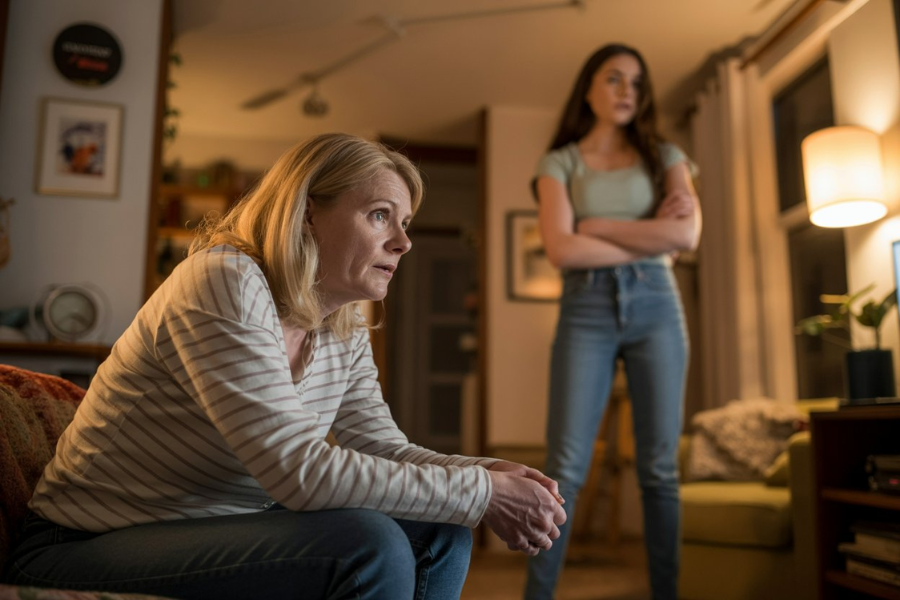
On a chilly Sunday afternoon, Kathy sat on the couch, staring blankly at the TV. Ashley stood nearby, arms crossed, her expression caught between worry and frustration.
“Mom, you’re not fine,” Ashley said, her voice trembling with conviction. “Something’s wrong. Please, let’s see a doctor.” She leaned closer, desperate for her mother to understand the seriousness.
Kathy’s tone sharpened. “I said I’m fine, Ashley. Stop exaggerating!” Ashley stood in utter shock. Her mom never yelled at her. But little did she know the sharpness was a mask. Inside, Kathy was aware that something was unraveling—something she could no longer explain away.
Failed Remedies
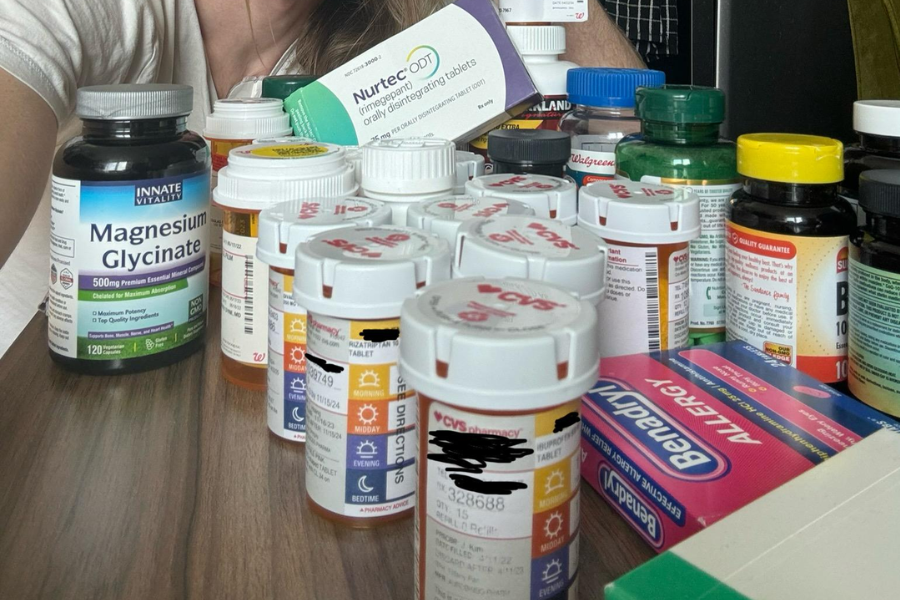
Desperate, Kathy turned to over-the-counter pills. Painkillers, cough syrups, supplements cluttered the kitchen counter. She lined them up like soldiers, convinced one of them would bring relief at last. Kathy shook one. “See? I’m trying.”
Kathy swallowed the tablets and forced a smile. “I’ll feel better soon.” Ashley shook her head. “You’ve been saying that for months. Do you even hear yourself anymore?!”
Weeks later, nothing had changed. The bottles emptied, her strength dwindled. Each failed attempt deepened the mystery—and Ashley’s dread that they were wasting precious time neither of them could afford.
The First Visit

Ashley finally dragged Kathy to Dr. Beth Ainsley. “She’s been coughing for months,” Ashley explained. The doctor studied Kathy’s pale face. “We’ll run some bloodwork and allergy tests,” she said gently.
Tests came back clean. “Everything looks normal,” Dr. Ainsley said gently. Ashley clenched her fists. “Normal? Look at her!” But the words hit a wall of polite dismissal.
That night, Kathy whispered, “Maybe they’re right. Maybe I’m imagining it.” Ashley snapped, “You’re not crazy. They just don’t care enough.” The silence that followed cracked them both in different ways.
Searching the Unknown

Late at night, Kathy scrolled endlessly through health forums. “Cough, fatigue, body aches… could it be autoimmune?” she murmured. Ashley peeked in. “Mom, the internet isn’t a doctor.”
Kathy sighed. “It’s something the doctors missed. Look—this woman had the same symptoms.” Ashley frowned. “And did she ever get better?” Kathy fell silent, hope slipping from her face.
Ashley groaned. “Mom, you’re trusting random people.” Kathy replied, “They believe me, Ashley. More than doctors do.” The words stung, but Ashley couldn’t argue.
The Second Opinion

Ashley drove them to another clinic. “Maybe a new doctor will listen,” she said firmly. Kathy leaned against the window. “Or maybe I’ll just look crazy again.”
The second doctor repeated the same routine—tests, questions, polite smiles. “Everything’s normal,” he concluded. Kathy smirked bitterly. “See? Nothing wrong.” Ashley shot him a furious glare.
“Then why can’t she get out of bed?” Ashley demanded. The doctor sighed. “Sometimes it’s anxiety, depression.” Kathy lowered her eyes. Ashley clenched her fists. “You don’t understand. Something’s killing her.”
Whisper of Guesses
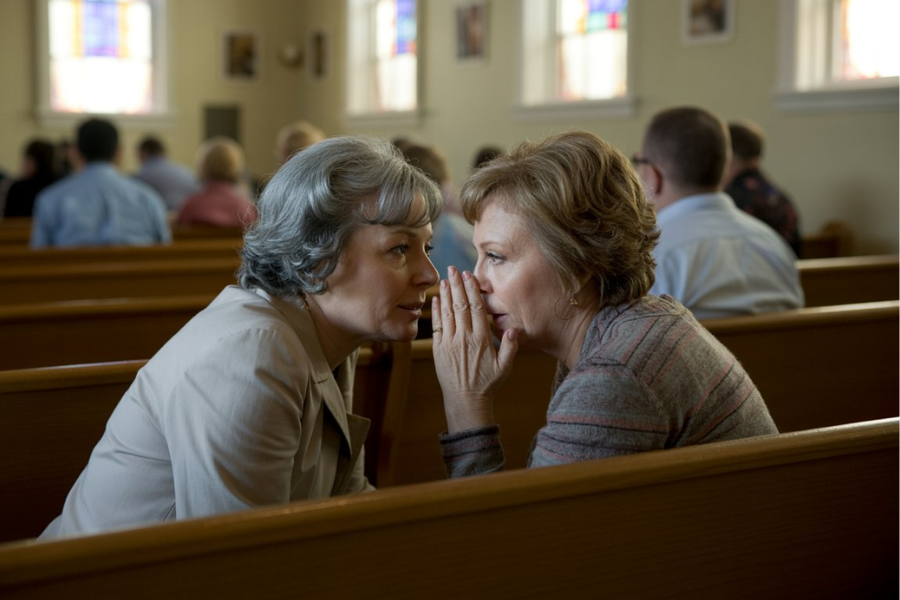
At church, neighbors whispered. “She looks sick again.” One woman leaned closer. “Doctors can’t find anything, right? Maybe she just wants attention.” Ashley overheard, her face flushing with anger.
“She’s not making this up!” Ashley snapped. Kathy tugged at her sleeve. “Ashley, stop. Please.” The stares burned holes in their backs as Kathy’s cheeks turned crimson.
The humiliation lingered longer than the sermon. For Kathy, shame clung like another illness. It was her first time to feel that the church was not a safe place.
The Weight Loss
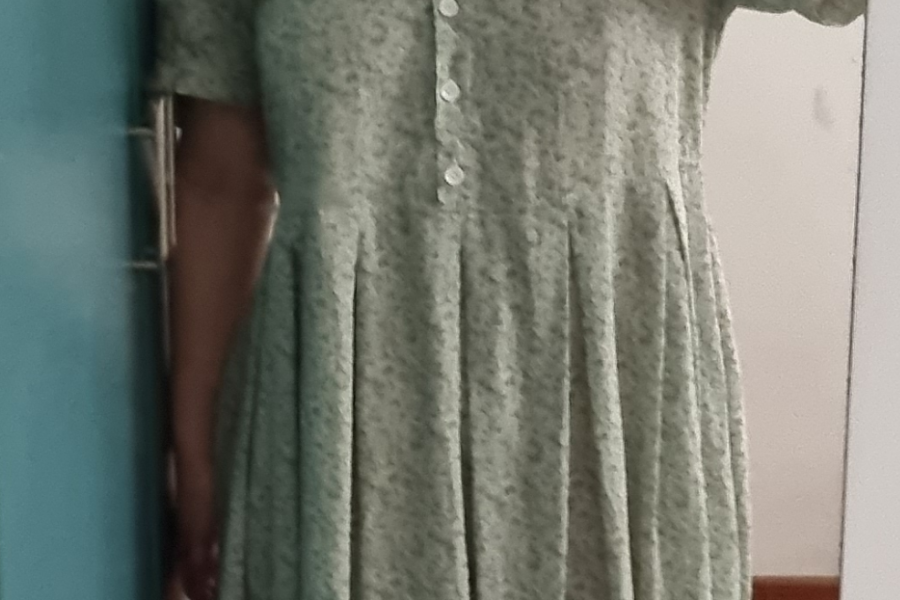
By spring, Kathy’s clothes sagged on her thin frame. Her cheeks hollowed, her voice rasped. Ashley stared at old photos, comparing them to the fragile woman before her.
Kathy visited her doctor regularly over the next 10 years. Dr. Ainsley provided Kathy with the best care and tested for everything. She remained calm. “Some fluctuations are normal,” the doctor assured, though Ashley noticed her eyes flicker with uncertainty.
One evening, after another doctor’s appointment, Ashley finally confronted her. “This isn’t normal. You’re not the same.” Kathy sighed, exhausted. “Then what is it?” Ashley had no answer—just the sinking certainty of worse to come. The following days… Ashley’s world began to crumble.
The Breaking Point

One morning, Ashley found Kathy collapsed on the floor. “Mom!” she screamed, rushing to her side. Kathy groaned, clutching her chest. “I just stood up too fast.”
Ashley’s hands shook as she called the doctor. “She can’t breathe right, she’s dizzy, she nearly passed out!” The receptionist calmly replied, “We’ll schedule an appointment.” Ashley snapped, “She needs help now!”
Kathy gripped her daughter’s arm. “Don’t panic.” Ashley’s eyes brimmed with tears. “How can I not panic? You’re slipping away, and no one believes me.” The silence afterward was unbearable.
Seeking Diagnosis
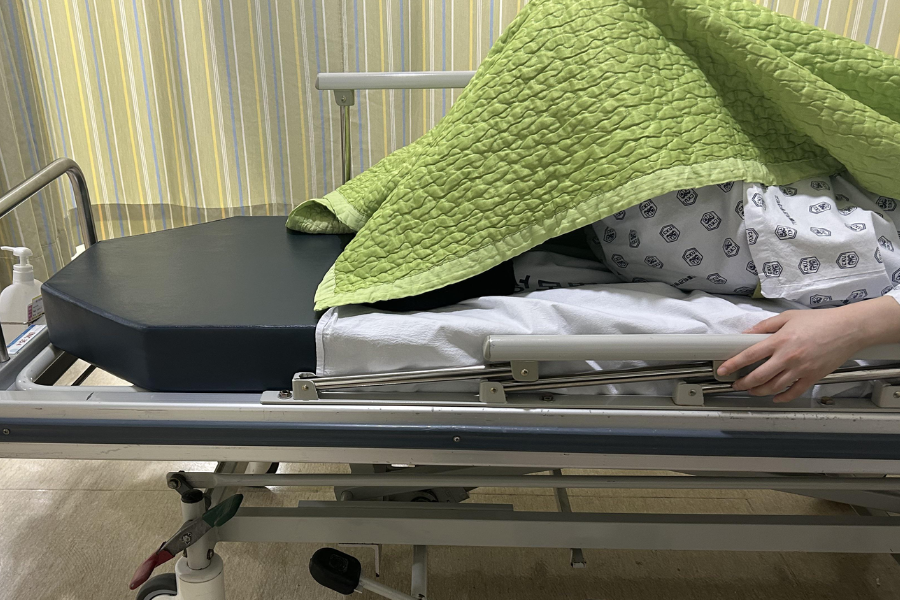
Ashley sat beside her mother in the examination room. “She’s worse,” she insisted. Dr. Ainsley frowned. “The scans show nothing.” Kathy whispered, “Maybe you should stop worrying so much.”
Ashley snapped, “Stop worrying? You can barely stand!” Dr. Ainsley raised her hands. “I understand your concern, but the tests don’t lie.” Ashley muttered, “Then the tests are wrong.”
The tension thickened. Kathy looked between them, exhausted. “Can we just go home?” she pleaded. Ashley reluctantly agreed, but her gut screamed the nightmare was far from over.
Frustrations Boil Over
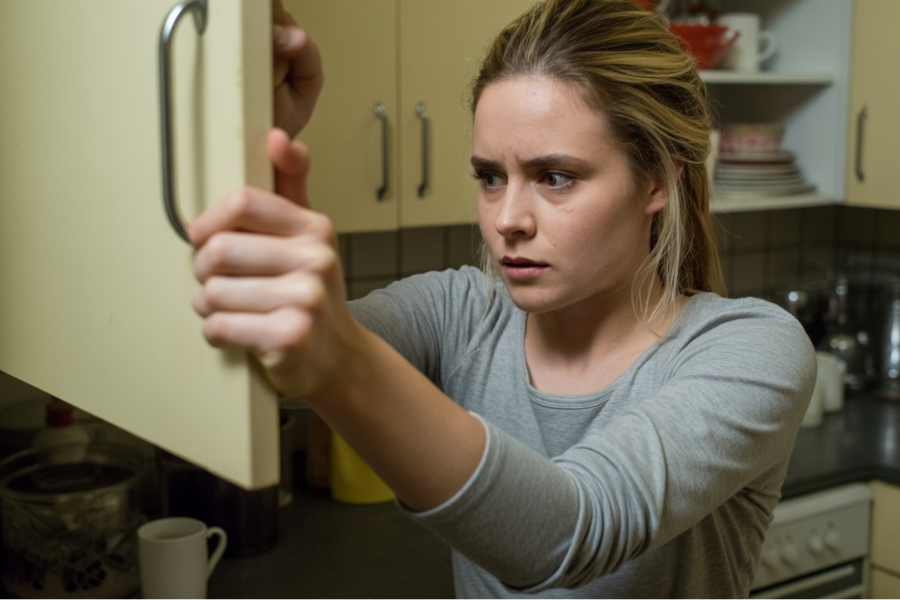
Back home, the air felt charged. Ashley slammed a cupboard shut, startling her mother. “Why won’t they listen? Why won’t you push harder?” Her voice carried desperation and anger.
Kathy’s reply was barely a whisper. “Because every test says I’m fine. Maybe it’s me. Maybe I’m imagining it!” Her eyes shimmered with tears she refused to let fall.
Ashley shook her head fiercely. “No. I see it, Mom. This is real.” But even as she said it, a shadow of fear crossed her own face—what if time was running out?
The Strain on Family

Ashley vented to her aunt over the phone. “She’s fading, and nobody cares.” The reply was quiet but sharp: “Maybe you’re making it worse by stressing her.”
Ashley slammed the receiver down. “Why won’t anyone listen?!” she muttered. Kathy overheard and whispered, “They don’t understand.” Ashley shook her head. “Then we make them understand! We have to do something, Mom!”
Convincing others wasn’t so simple. Each failed attempt left Ashley more isolated, more desperate. But fear and overthinking brought Ashley to a discovery that will change their whole life.
The Strange Pattern
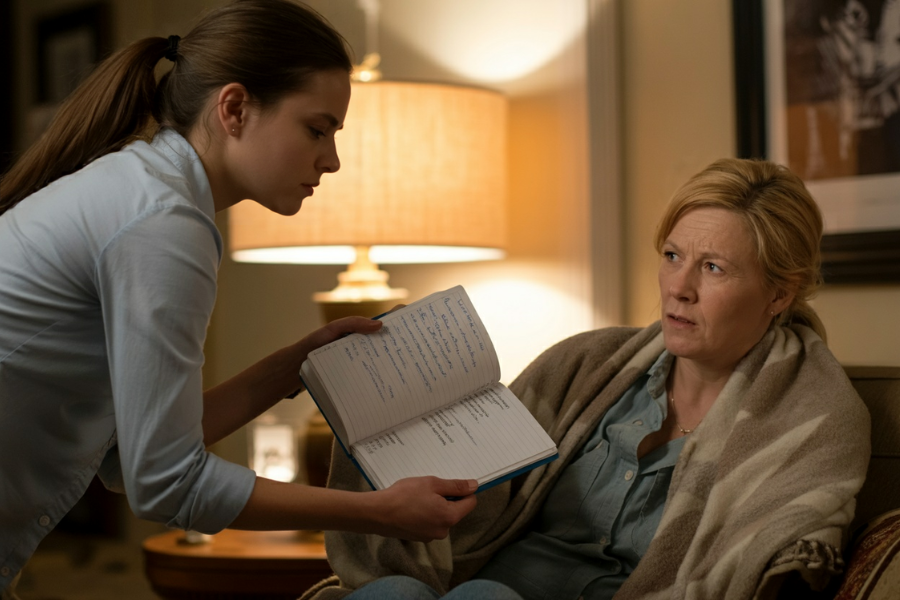
Ashley pointed to her notebook. “Mom, look. Your symptoms spike at home, but outside, you’re lighter.” Kathy frowned. “It’s coincidence.” Ashley pressed harder. “No. It’s a pattern!” For her, the house wasn’t a shelter. It was the enemy.
Kathy hesitated. “If you’re right, what does that mean?” Ashley whispered, “It means this house isn’t safe.” Kathy shook her head. “Ashley, don’t start imagining ghosts.”
Ashley tapped her pen. “If the doctors won’t solve this, I will.” Kathy sighed. Powerless. She knew her daughter very well. If she’s determined, no one can stop her.
Labeled Delusional
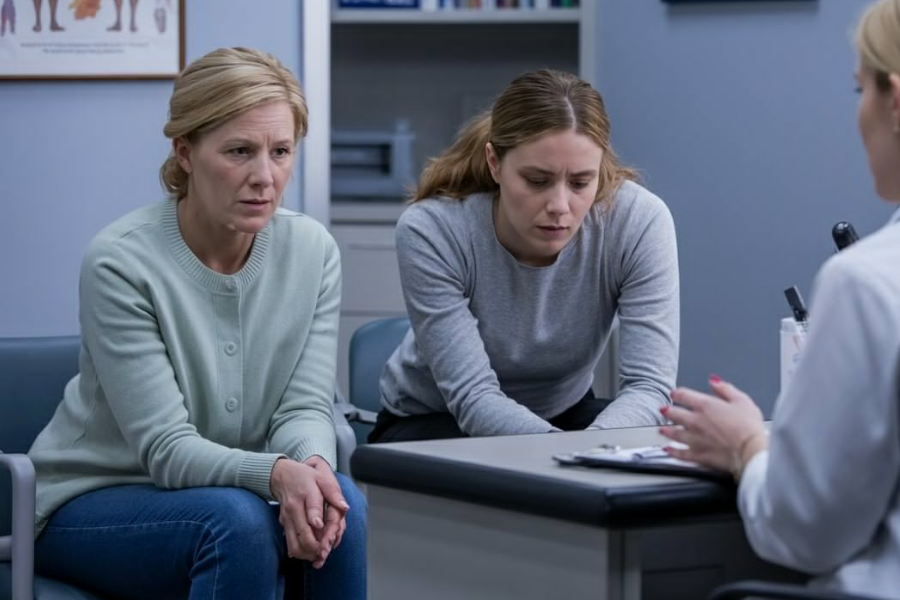
Dr. Ainsley suggested counseling. “Sometimes stress disguises itself as illness,” she said gently. Kathy nodded, humiliated. Vindicated. Ashley stared at her in disbelief. “Now, you’re calling her crazy? You’re just like the others!”
The words cut Kathy more than the symptoms. She lowered her head. “What if they’re right? What if it’s depression?” Ashley’s heart sank—her mother was losing faith in herself.
That night, Kathy avoided mirrors. She didn’t want to see the woman who looked less like herself each day. Ashley did see—and vowed to take matters into her own hands.
Shadows in the Home
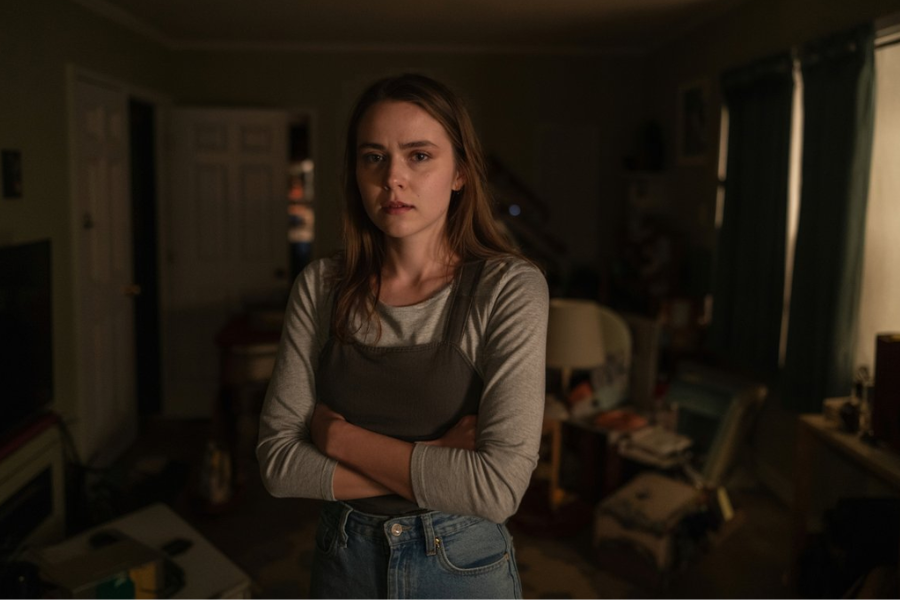
Late one evening, Ashley whispered, “Don’t you feel it? The house. It’s heavy.” Kathy chuckled tiredly. “It’s just your imagination.” Ashley shook her head. “No. It feels alive.”
Kathy coughed, covering her mouth. “Alive? That’s ridiculous.” Ashley crossed her arms. “Then explain why you’re always worse here. Why do you get better the second we leave?”
Kathy fell silent, her eyes darting to the darkened corners of the room. Ashley didn’t waste time; she took a deep breath, ready to prove that the danger was in their home and it was slowly killing them.
The Kitchen Audit
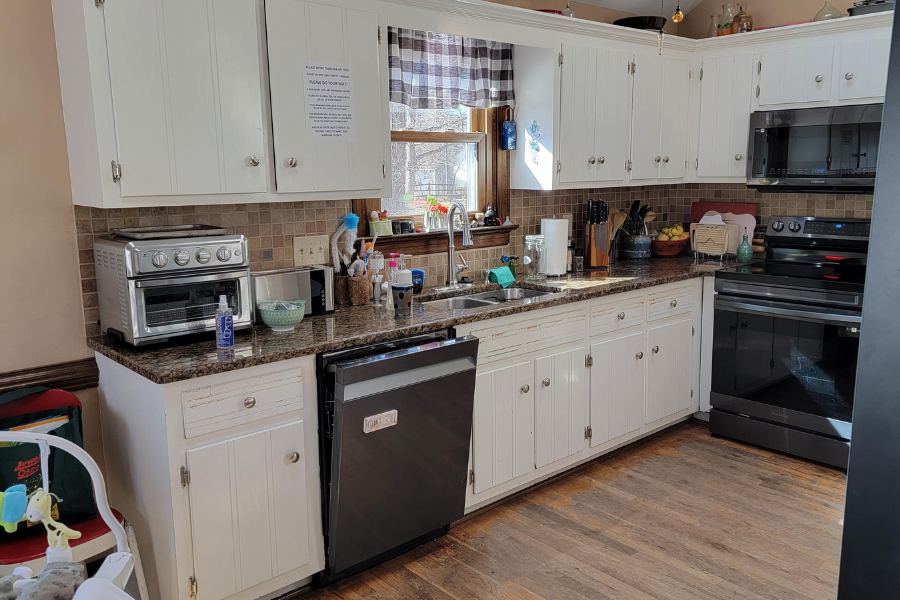
Ashley turned her attention to the kitchen, convinced the answer might be hidden in what they consumed daily. She lined up jars, cans, and condiments, scanning expiration dates with a careful hand.
Every bottle was scrutinized, even the innocent sugar. But none explained the years of illness. The more she checked, the more absurd the task felt. “Am I going crazy, too?” Ashley asked herself.
The silence in the room pressed down, as though the house itself mocked her search. But her instincts whispered otherwise. Suddenly, Ashley’s eyes brightened. An idea came to her mind.
Dreams of Escape

Ashley begged her. “Let’s stay somewhere else for a while—Grandma’s, maybe. Just to see.” Kathy shook her head. “This is our home.”
“Home shouldn’t hurt you,” Ashley argued. “Please, Mom. One week away.” Kathy’s lips pressed into a thin line. “And if nothing changes?” Ashley answered quickly, “Then I’ll admit I’m wrong.”
Kathy sighed, torn. “One week.” Ashley hugged her tightly. But deep down, she feared one week away might not be enough to break the house’s grip.
A Week Away

At her grandmother’s, Kathy laughed more, ate heartily, and slept through the night. Ashley’s eyes lit up. “See? You’re better here!” Kathy frowned. “It’s temporary. Don’t get your hopes up.”
But Ashley knew. Each smile, each laugh was proof. “You’re better because we’re not home,” she insisted. Kathy turned pale. “So what does that say about our house?”
Ashley leaned closer. “It says something’s wrong in it. And I’ll prove it, Mom. I swear I will.” The promise echoed like a vow in the night.
Back to the Shadows
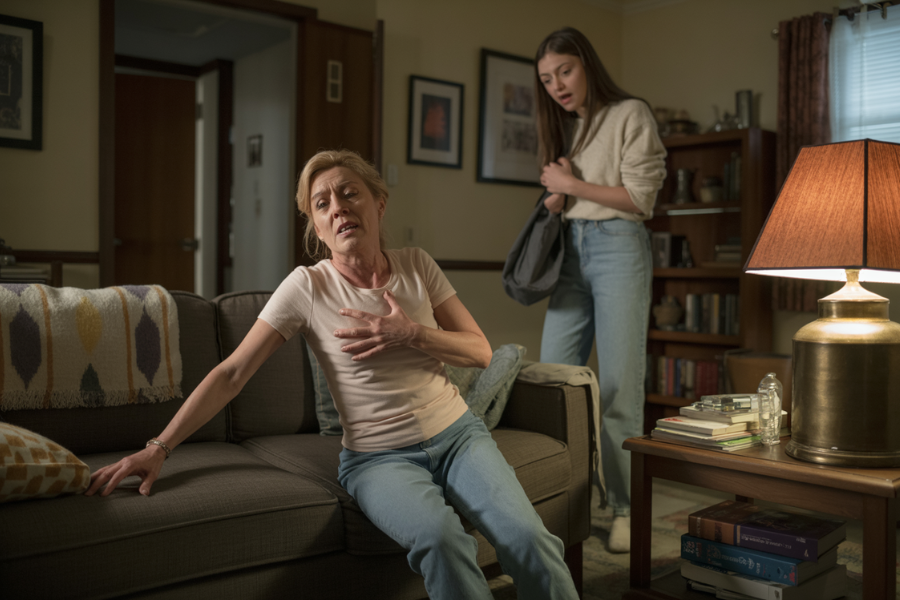
When Kathy came home, the cough was back within hours. Ashley’s heart sank. “Do you see it now?” Kathy shook her head weakly. “I just caught another cold.”
Ashley threw her notebook down. “No more excuses! The house is killing you.” Kathy pressed her hands to her temples. “Ashley, please stop.”
Ashley’s voice broke. “I can’t stop—not when you’re slipping away in front of me.” Kathy’s silence filled the room, heavier than the suffocating air itself. Ashley pushed for answers—never imagining the solution that lay ahead.
A House in Decline

The home mirrored Kathy’s condition—dust gathering, dishes unwashed, repairs ignored. Ashley juggled school and caretaking, but the weight grew heavier with each passing week. She was exhausted, angry, and afraid.
Finally, Ashley convinced her mother to allow contractors for long-overdue repairs. “Just let them check the place,” she insisted. Kathy hesitated, then agreed with a tired nod.
Ashley clung to the smallest hope: maybe fixing the house would help her mother somehow. But she couldn’t know that this decision would change everything.
A Desperate Gamble

Ashley begged a home repair friend over the phone. “Please check our house. Something’s wrong.” He frowned. “What are the symptoms?” Ashley rattled them off. His expression darkened. “That doesn’t sound good.”
Kathy protested. “Ashley, this is unnecessary.” Ashley glared. “Unnecessary? You almost died last week.” Kathy sighed. “Fine. But if they find nothing, you drop this obsession.”
Ashley nodded, though her gut told her otherwise. She whispered to herself, “They’ll find something. They have to.” And in her heart, she braced for the worst.
The Unexpected Visitors
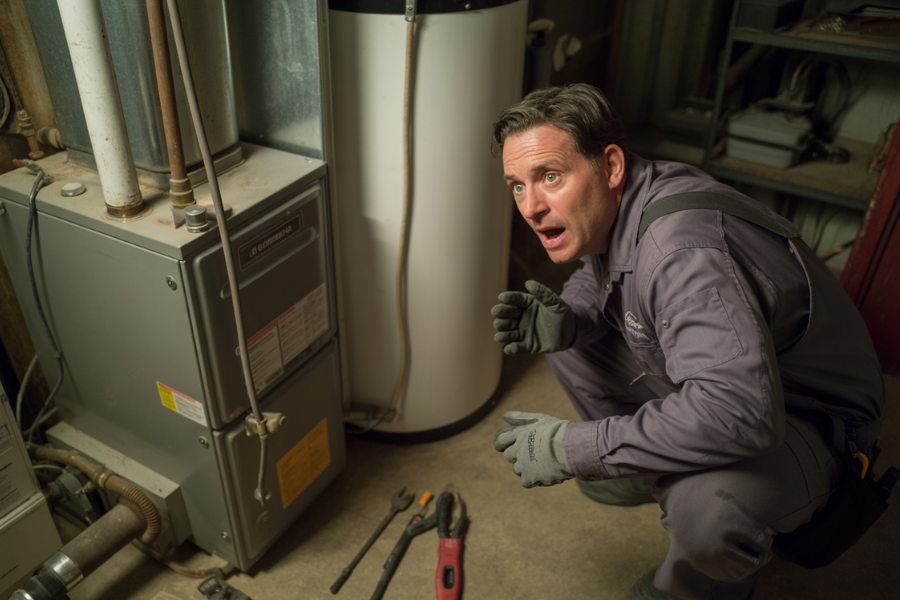
The repair crew arrived on a brisk morning, tools clinking as they entered. They smiled politely, unaware that the house held a secret buried in its walls for over a decade.
Ashley hovered nearby as they inspected the furnace and water heater. One paused, brow furrowing. “This is very suspicious,” he muttered, crouching lower for a closer look.
Kathy, sitting on the couch, barely lifted her head. Ashley leaned in nervously. The contractor turned slowly toward them; his face suddenly serious.
A Question That Stung
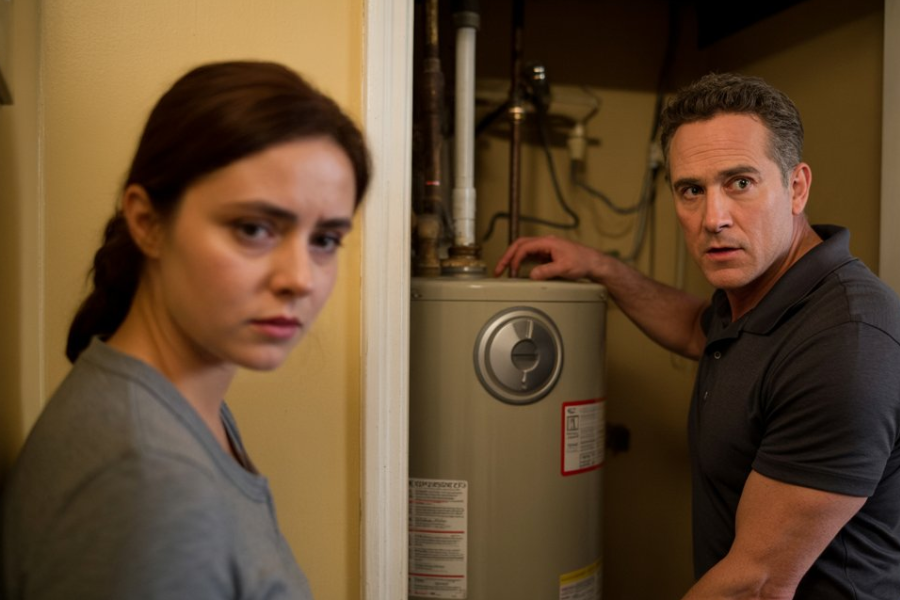
The repairman’s voice broke the silence. “When was this installed?” His hand rested on the water heater, expression unreadable. Ashley’s stomach tightened, sensing the weight behind the question.
Kathy thought hard, her memory foggy. “Maybe… ten years ago. Ashley was still little then.” Her voice trembled, weak but certain enough to leave everyone uneasy.
The repairman exchanged a look with his colleague. Something unsaid passed between them—something urgent, something dangerous. Ashley’s pulse quickened. She had seen this look before: the look of someone hiding alarm.
A Subtle Alarm
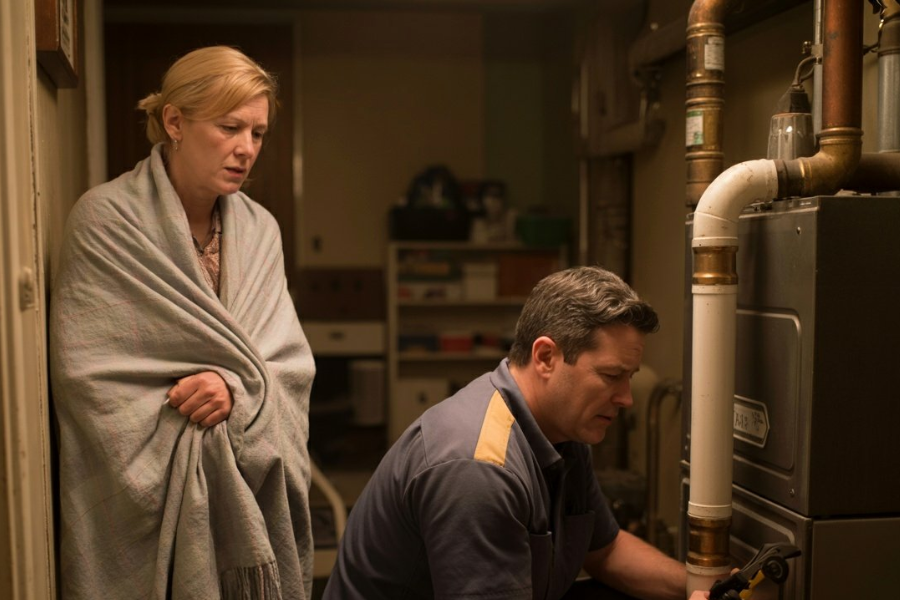
The repairman straightened, brushing dust from his hands. “Things are not right here, Ma’am,” he muttered, his tone sharper now. Kathy tilted her head. “Not right? What do you mean?”
He crouched again, pointing at faint seams near the pipes. “This could be a problem—a serious one.” His words dropped like stones, leaving Ashley frozen in the doorway.
The room felt colder, heavier. Ashley’s heart raced. “What kind of problem?” she demanded. But the man hesitated, as if saying the words aloud would make them too real.
A Demand for Truth
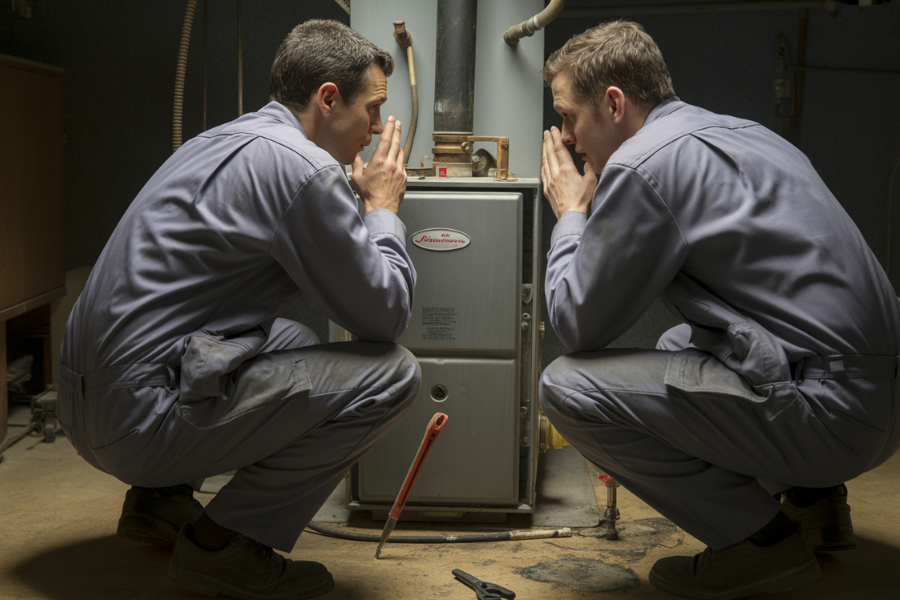
Seconds dragged like hours. The two men whispered briefly, their voices low. Ashley stepped forward, fists clenched. “Stop whispering. Just tell us what it is.”
Her words cut through the heavy silence. Kathy leaned forward on the couch, her voice frail but firm. “Please,” she whispered. “Don’t make us wait. Just say it.”
Both men froze, then exhaled together, as though the truth itself was toxic. The moment hung in the air—until finally, the word slipped out.
The First Hint
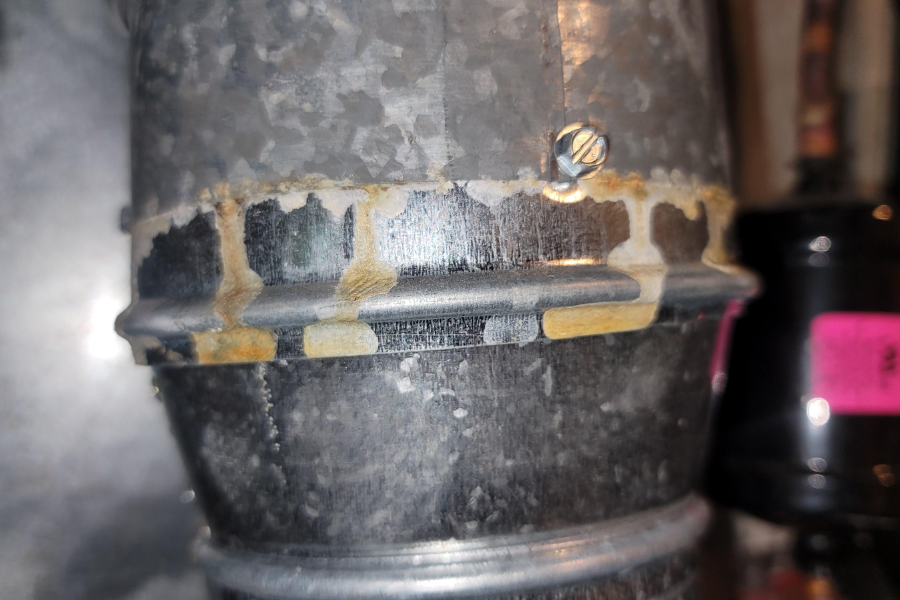
Finally, the repairman exhaled. “There’s a chance… you’ve got a leak.” Kathy blinked, confused. “A leak? But we don’t smell anything.” Ashley stepped closer, alarmed. “What kind of leak?”
“Gas,” he said flatly. “Not the kind you smell. Carbon monoxide.” His voice carried the weight of finality, and for the first time, Ashley felt her knees weaken.
Kathy frowned, her lips trembling. “Carbon monoxide? That’s… dangerous, isn’t it?” The repairman’s expression hardened. “It’s silent, invisible, and deadly. If I’m right, you’ve been breathing it in for years.”
Connecting the Dots

Ashley’s hands flew to her mouth. “Oh my God—Mom. The headaches, the cough, the fatigue…” She turned to Kathy, tears filling her eyes. “It wasn’t you. It was this house.”
Kathy sank deeper into the couch, realization crashing down like a wave. “All this time,” she whispered. “All those years…” Her voice broke, years of confusion condensing into sudden clarity.
The repair crew worked quickly, confirming their suspicion. Pipes misaligned, furnace poorly installed, trace leaks escaping slowly. Silent poison had been invading their lives for over a decade.
The Shocking Truth
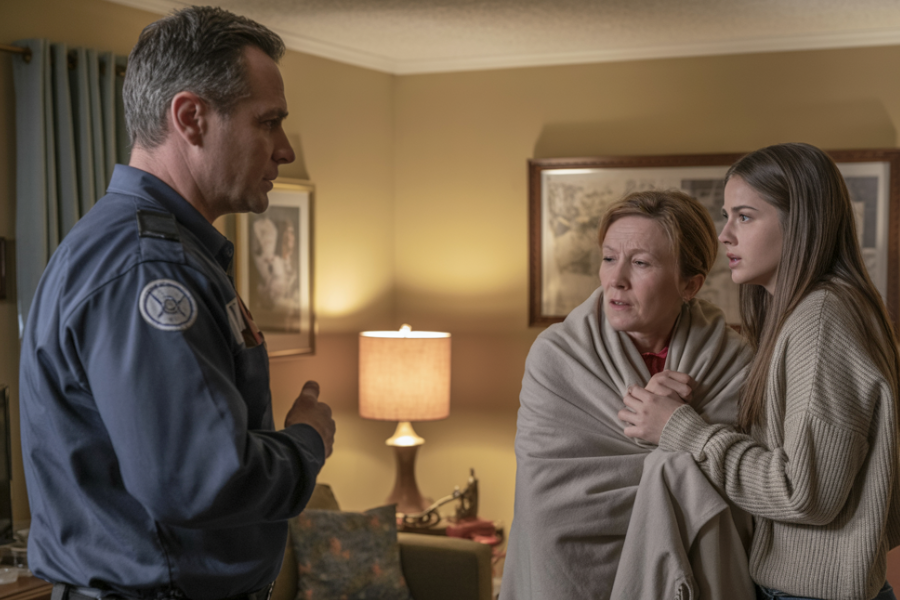
The repairman’s face was pale as he delivered the final words. “This house has been poisoning you. If it had gone on longer… you might not have survived.”
Ashley clutched her mother’s hand, trembling. Kathy’s tears spilled freely, relief and terror colliding in her chest. “I wasn’t crazy,” she whispered. “I was dying—and nobody knew.”
The truth hung in the room like the gas itself—unseen, suffocating, inescapable. After ten years of pain and doubt, the silent killer had finally been unmasked.
A Breath of Relief
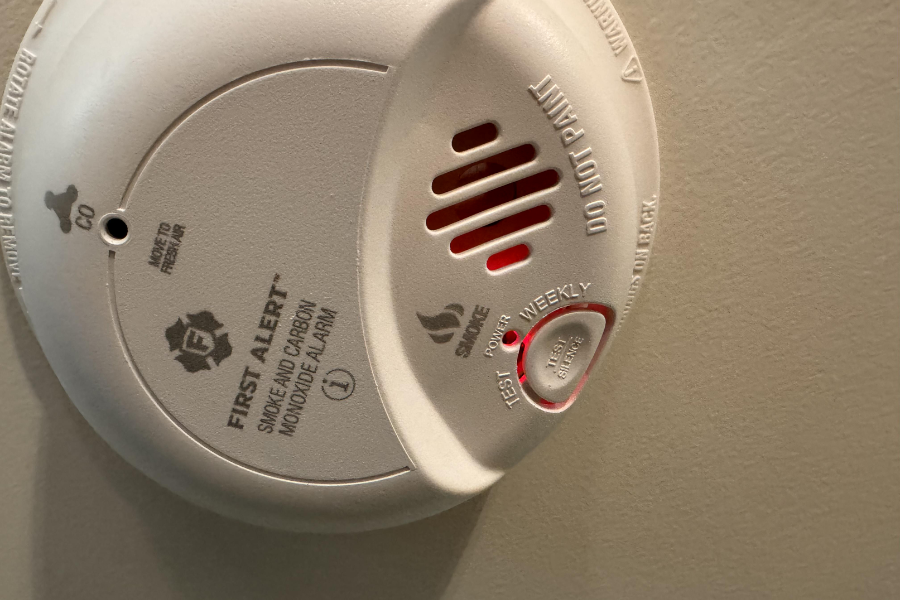
The contractors sealed the leak and replaced the faulty equipment. They also insisted to install a carbon monoxide detector. For the first time in years, the air in Kathy’s home felt safe, clean, and undeniably different.
Kathy woke the next morning with unexpected lightness. The cough eased, her headache softened, and she could rise from bed without gasping. Ashley nearly cried watching her mother move freely again.
“See?” Ashley whispered, hugging her tightly. “It wasn’t you.” Kathy’s voice cracked. “No… it was the house all along.” But even in joy, a shadow lingered. Carbon monoxide had stolen years of her life. Would she ever fully recover from its invisible grip?
Lingering Scars
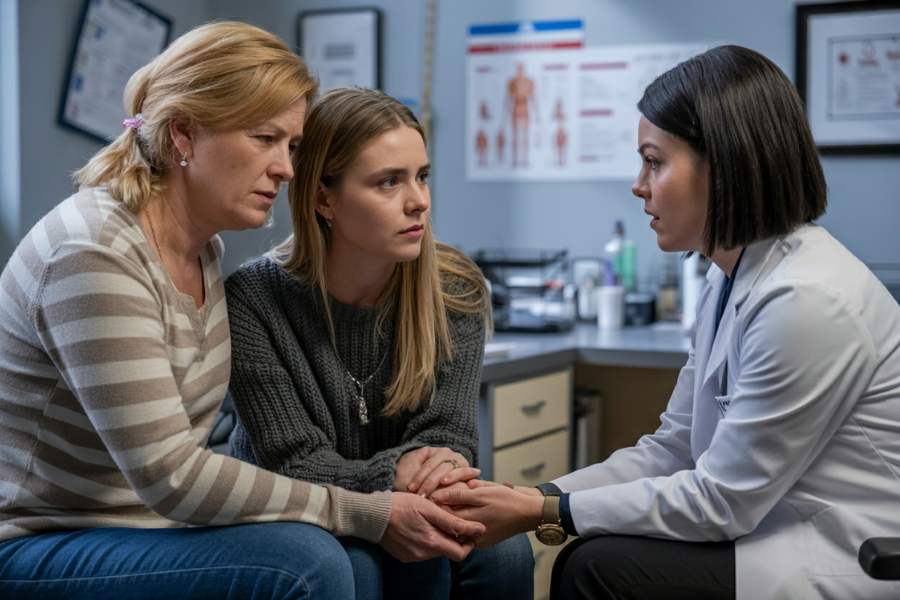
Though her health improved, Kathy’s voice stayed hoarse. Some days, fatigue still clung to her. “It’s the damage,” Dr. Ainsley explained. “Ten years is a long time.”
Ashley frowned. “So it’s permanent?” The doctor hesitated. “Not entirely. The effects may fade, but it needs time.” Kathy closed her eyes. “Then I’ll live with the scars.”
Ashley squeezed her hand. “At least you’re alive to live with them.” Kathy nodded. But both knew the cost of ignorance had been painfully high. Then, Kathy wasn’t able to hold back.
Confronting the Doctor

Kathy faced Dr. Ainsley. “For years, you told me I was fine. I wasn’t,” she said, her voice steady but heavy with grief.
Dr. Ainsley looked stricken, struggling for words. “The tests… they showed nothing. We never suspected—” Kathy raised a hand. “I know. But I’m still glad you were there. Thanks.”
Ashley watched silently, proud of her mother’s resolve. For years, she had carried the fight alone—now, at last, her mother was demanding answers too.
A Hard Lesson

One night, Kathy addressed Ashley.“I should’ve listened sooner. I dismissed my own symptoms—and you. You were right all along.” Ashley’s eyes filled with tears. “I just wanted you safe.”
Kathy smiled sadly. “You kept fighting when I couldn’t. That’s what saved me.” Ashley shook her head. “No, Mom. You saved yourself by choosing to survive.” Their hands intertwined.
Kathy knew that what their family endured for ten years was something thousands of others still face, often without knowing it. And that danger has a name.
The Silent Danger

Carbon monoxide is a colorless, odorless, and tasteless gas. It cannot be detected without specialized equipment, making it one of the most dangerous and overlooked hazards inside a home.
When inhaled, carbon monoxide displaces oxygen in the bloodstream, starving vital organs of what they need to survive. Even low-level exposure can cause headaches, dizziness, fatigue, and nausea.
High levels of exposure can lead to unconsciousness, organ damage, and death. The insidious nature of this gas is why it is often referred to as the “silent killer.” It affects thousands of families, and unfortunately, Kathy’s ordeal is part of a much larger problem.
Misdiagnosis and Risks

One of the greatest dangers of carbon monoxide poisoning is how easily it can be mistaken for other illnesses. Symptoms often mirror the flu, stress, or even psychological conditions.
Because of this, countless cases go undetected for years. Patients endure unnecessary suffering while professionals misinterpret the underlying cause, as happened to Kathy Jameson for more than a decade.
Statistics reveal the gravity of the issue: in the United States alone, more than 400 people die annually from carbon monoxide exposure, while thousands more require emergency treatment. And preventing this starts with awareness.
Guide to a Safer Home
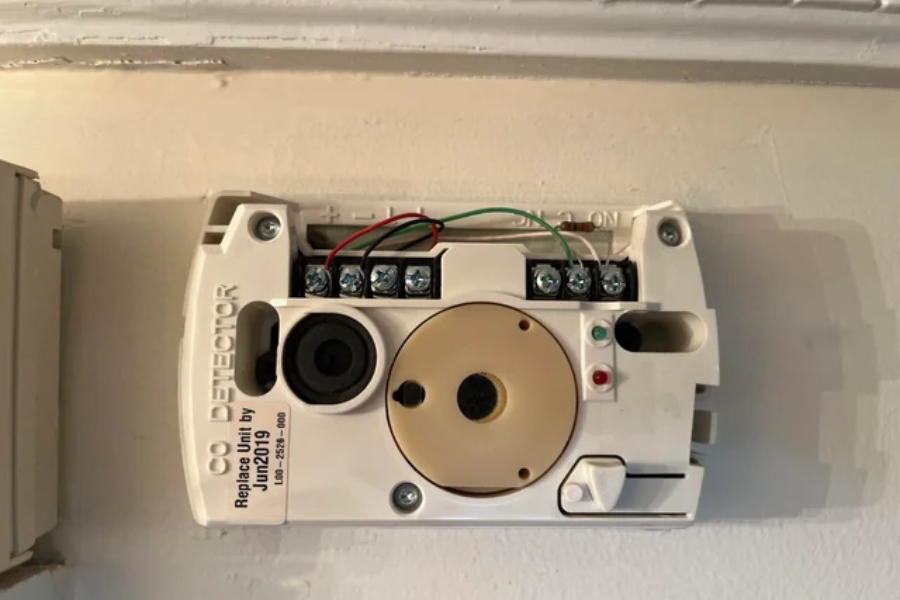
The most effective way to prevent carbon monoxide poisoning is by installing detectors. These devices should be placed near bedrooms and mounted at least five feet above the floor.
Detectors sound an alarm when carbon monoxide reaches unsafe levels. Every household should treat them as essential, not optional.
Routine maintenance of appliances such as furnaces, water heaters, and fireplaces is also vital. Regular inspections ensure that faulty installations or leaks are identified before they become life-threatening. But what happens if it’s detected?
Emergency Response

If carbon monoxide exposure is suspected, immediate action is critical. The first step is to leave the premises and move into fresh air, away from the contaminated environment.
Emergency services should be contacted without delay. At the hospital, diagnosis is confirmed with a blood test measuring the carbon monoxide level in the body.
Treatment typically involves breathing pure oxygen through a mask. In severe cases, patients may undergo hyperbaric oxygen therapy, which accelerates the replacement of carbon monoxide with oxygen in the bloodstream.
Lessons for Everyone
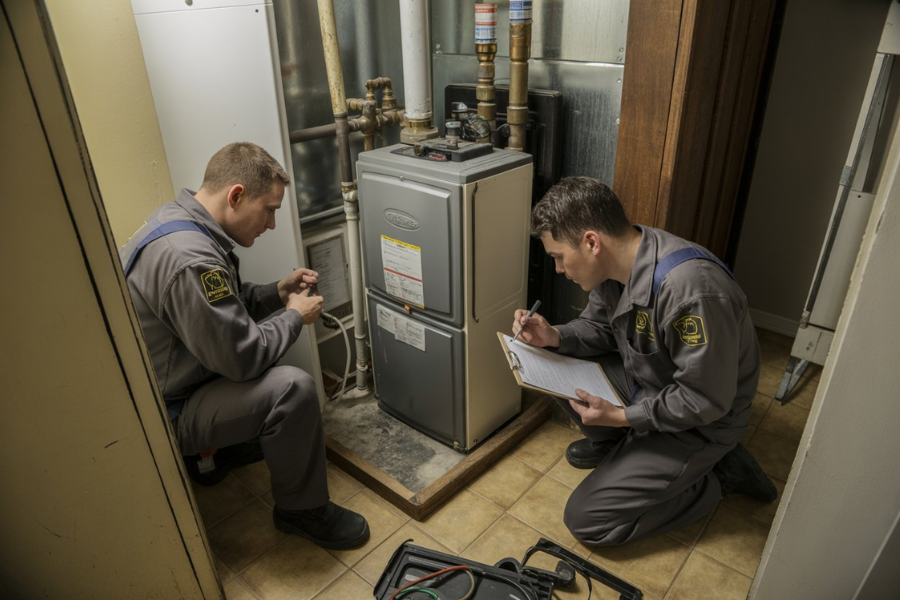
The tragedy of carbon monoxide poisoning is that it is entirely preventable. Kathy Jameson’s decade-long ordeal underscores the importance of awareness, vigilance, and proactive safety measures.
Every home should be equipped with detectors, every appliance routinely checked, and every symptom taken seriously. Ignoring or misinterpreting signs can cost years of health—or even life itself.
Carbon monoxide remains an invisible threat, but with knowledge and preparation, families can protect themselves. Kathy’s survival became a warning: what doctors missed for ten years, every family could prevent with one small device.

